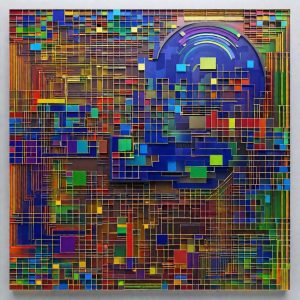
Sometimes a photo is good, but something spoils the shot a bit – for example, an extra person in the background, a dim sunset, or the wrong mood. For such cases, we created Nano-Banana, a simple AI-based tool that understands what you want to change and does it in just a few seconds. We will tell you more about it in this article.
The idea is very simple. You upload a photo, write a short instruction in your own words, click “apply” and get the options. No complicated panels and hundreds of sliders. It’s suitable for everyone – bloggers, salespeople, aspiring designers, teachers, parents – just anyone who needs to quickly clean up or style a shot.
Instant change of reality
This new trend has gone viral because of its unusual capabilities: users massively transform people and animals into 3D figures, stylize shots to look like retro pixel art or magazine covers, change hairstyles and accessories without a photo studio. Social networks are full of these examples, and the media confirm that interest in Gemini has skyrocketed thanks to this tool.
The way it works is that the AI model sees the objects in the photo, for example, a person, an animal, a background, the sky, clothes, and then carefully changes only what you asked for. If you want, it will remove garbage from the sidewalk. If you want, it will replace the cloudy sky with a clear one. You can add a shadow, adjust the light, make the skin tone warmer, or dim the shine. All work is based on Gemini 2.5 Flash Image technology, an optimized generative engine for fast image editing and creation.
The features are enough for most everyday tasks. It’s easy to change the background to a studio or city background. Or reshape clothes by color or material. You can make a light retouch of a portrait without a plastic effect. There are styles ranging from movie pictures to retro film, comic books, etc. It is also convenient to remove minor defects, scratches, and dust.
By the way, Nano-Banana is available not only in the app. It has started to be integrated into external popular platforms – for example, the function is already available through the WhatsApp chatbot.
Here’s how to work with it correctly
- Open Google Gemini or one of the Nano-Banana-based web services.
- Upload a photo.
- Describe the result – for example, “change the background to an evening city, leave natural light, remove or add an object to the photo.”
- Next, review the options and, if necessary, clarify the promo – “less shine on the skin,” “denim jacket instead of a cowl,” etc.
- At the end, save the best rendering. (P.S. In Gemini, the tool is also available as “image creation/editing” and works with voice or text prompts.
Some tips to make the result a little better
- Try to make one change in the photo with one promt (text request). First the background, then the light, then some minor edits.
- Ask for light specifically – “soft daylight,” “warm sunset,” “no overlight,” etc.
- If you are correcting a portrait photo, write “preserve facial features and skin texture.”
- When style is important, give a reference, for example, “like a magazine cover”, “like a 90s film”.
- Always keep the original to go back a step.
To get used to the tool, set aside 10-15 minutes and take three versions of the same photo – “clean”, “bright”, and “stylish”. This way, you’ll quickly understand how to formulate prompts and what tone you like. With experience, the descriptions will become shorter and the results more consistent. In fact, compared to conventional editors, Nano-Banana’s approach saves a lot of time. You don’t need to learn masks, layers, and complex tools – you just describe the desired result.
As for certain nuances, this is when very small texts in a photo can float. Complex patterns are sometimes simplified. If you ask for too many changes at once, the result will look artificial. So in such cases, it’s better to go step by step and see what happens after each edit.
There is a dark side…
When this kind of editing becomes the norm, the photo will cease to be evidence. Today it’s “remove the stain,” and tomorrow it’s “put another face.” There will be plausible forgeries of checks, advertisements, and certificates. The line between truth and fiction will become thinner, and the credibility of images will sink. That’s why we shouldn’t forget about ethics. You should not create images that mislead people, especially when it comes to news, reviews, or someone’s reputation. Ask for permission if you edit other people’s photos. Avoid using other people’s brands and logos as if they were official advertisements, unless you have permission from the brand. And most importantly, respect privacy.

